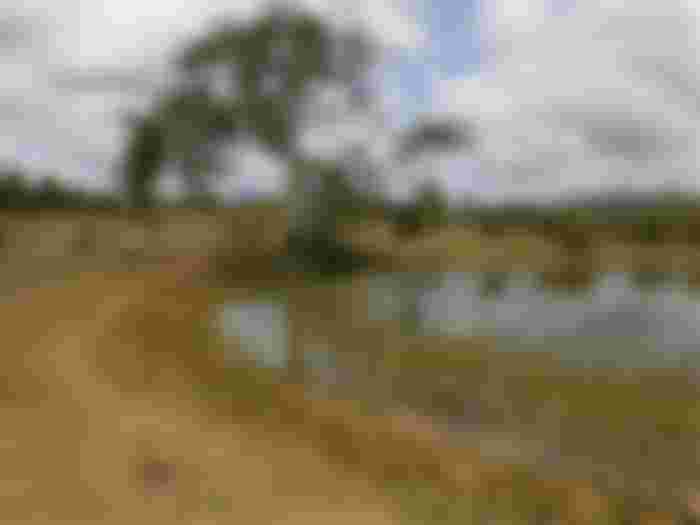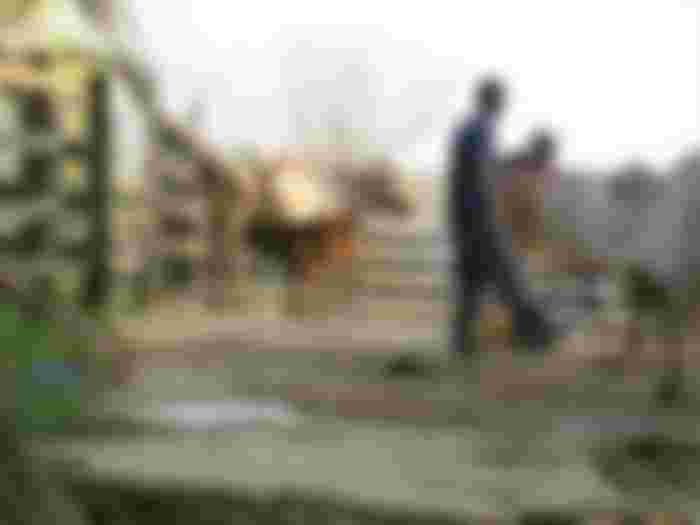A few months earlier or a bit of history.
By the end of 2015, providing my services as a civil works coordinator for a company that worked for PDVSA in the Gran Misión Vivienda Venezuela, specifically in the popular neighborhoods of Valencia-Venezuela and in the program of Replacement of Ranch for House, I receive a call from the Superintendent of PDVSA responsible for the program throughout the state of Carabobo and in this communication he participates or alerts me that I should not present myself to the neighborhood Buen Samaritano, because there is information that my person was going to be kidnapped to demand ransom from the company.
Who knows!
But it turns out and it happens that at the same time they had also communicated with the company and when I arrived at the office I received the notification...
Get ready to issue the directives from the office for the conclusion of the activities at the Good Samaritan, do not return to the site.
Thus the instruction was fulfilled and between conversation and conversation between the President of the company and myself, the idea of preparing a project for...
MY LEGACY FARM
The farm Mi Legado, under the tenancy of the Lawyer Neibi Romero, and whose lands belong to the Venezuelan state under the administration of the National Land Institute, is located in the parish of Capadare, in the municipality of Acosta, Falcon state - Venezuela.
Cesar, that is the name of the president of the company and Neibi's husband, suggested me the possibility of taking the reins of the farm and consequently to elaborate a project to put to produce the referred property, we planned to make some previous visits and everything was left to my acceptance or not.
First Visit.
When I was a boy my father always told me, when you want to sell a farm or make a good visual impression of it, be sure to take visitors in winter, of course because of the rains, everything looks green" and exactly that first visit took place in November and by chance two or three downpours had fallen and the areas that were not mountainous were greening.
We could not enter the grounds by car, the soil is clayey and there were no defined internal roads to venture a tour, so we walked for a while but not enough to get a broad enough idea of the terrain.
Second visit.
A week later I requested a four-wheel drive vehicle and scheduled a visit with an overnight stay for at least 3 days. I also downloaded Google eart to see the space where I could locate the farm and I could clearly see the divisions of the paddocks or spaces. I was accompanied by 4 agronomy students, among them my son Daniel, and I set up or requested the corresponding logistics to perform a soil sampling and subsequent soil laboratory analysis with their respective recommendation by the soil department of INIA (National Institute of Agricultural Research).
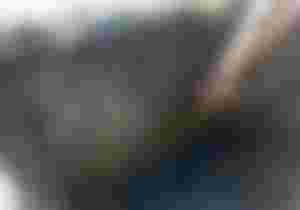
Calicata excavation for soil profile study.
Results.
1.-We were able to make an important tour of the property and the respective soil sampling.
We confirmed that the existing water source consisted of 9 (nine) small artificial lagoons, there was no river or deep well, then in conversations with a company specialized in drilling wells, with which I had worked, they confirmed that in that area there was no history of wells or record of aquifers, so I had to rule out that possibility
.
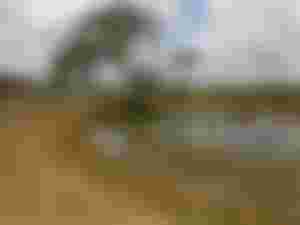
Ponds scattered throughout the farm
Of the area declared and later verified by topographic survey, of 140 hectares, about 30 hectares were deforested or in low stubble conditions, the rest was high stubble or mountain.
That I did not observe the presence of artificial pasture, only the presence of natural pasture known as "cabezona" (Paspalum virgatum) could be verified.
5.-The perimeter fence with barbed wire was in regular condition and the northern boundary facing the national highway was being dangerously invaded by locals.
There were approximately 100 animals on the farm, of which only 10 belonged to Neibi, the others to one of César's brothers. The presence of these animals generated an extra exhaustion of the farm, since in reality it was not in conditions to support even the load of the 10 own animals.
The existing infrastructure did not go beyond an old but solid corral of heartwood, a cattle wharf with a regular driving and vaccination chute and a small roofed space that was used as a calf pen, in it two concrete feeders in regular to good condition of use. An open space divided into 3 sections called milking corrals and apart, also here there were 3 feeding troughs in regular condition.
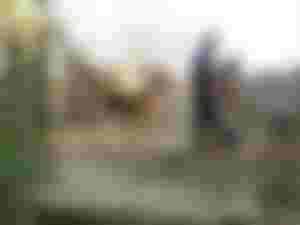
Existing corrals
Two previous points.
San Juan de los Cayos is called the population center that is the capital of the municipality, it is a tourist town with little commercial activity beyond the importance of agriculture, fishing and coconut, but in that town Cesar has a "modest but comfortable" home and we stayed there and I was going to live there.
I brought up the existence of this house because I had at my disposal the services of the Architect of the company and between the conversations of use and enjoyment arose the idea of the PROJECT AGROECOTURISTICO MI LEGADO.
Premises of the Project:
Between 1973 and 1976 I had elaborated a Livestock Project for the San José Farm, located in the Silva district of Falcón state, so I relied on that previous experience to project Mi Legado.
Cesar expressed his agreement to the original approach and even in the line or selection of the cattle to use and that conversation coincided with the proximity of the Carora livestock fair and his immediate desire to attend these, I made contact with acquaintances in the area and the livestock sector, Cesar attended the fair and made the first two mistakes.
First mistake:
He acquires 10 heifers and a bull.
The heifers were not heifers, they were mautas, if anything they would reach a little more than a year old and their weight was not more than 12 arrobas (@).
The Torete, in terms of phenotypic conformation, did not represent that of a reproductive bull either.
When acquiring heifers, the ideal is to negotiate them in pregnancy conditions and if it is the last trimester, the better.
When you are going to acquire a reproductive bull, the ideal is to do it with a proven male, that is to say, an animal with proven offspring, that is called "Proven Bull", not a maute that is going to finish being formed.
Second Mistake:
If you are going to re-found or found a farm, the ideal is not to have animals but you can guarantee their feeding, good feeding, consequently instead of taking out animals in a farm that was being over exploited you added to it.
Third Error:
He insists on working on the basis of his own capital and no matter how much I advised him on the convenience of resorting to credits from the state or even private banks, it was not possible.
Now we will see what is the development
The project starts from the basis of intensive rational exploitation known as Voisin system, which combines wooded areas and intensive pasture system.
As I pointed out before, a good part of the farm is located in tree or semi-mountainous conditions and the state does not give deforestation permits for more than 20 ha, which would take at least 3 years to efficiently adapt the farm to this type of project. Since by law 30% of the total area must be kept under the mountain condition. Something with which I agree 100% to maintain a minimum ecological balance between the needs of man to produce food and the requirements of nature or ecosystem.
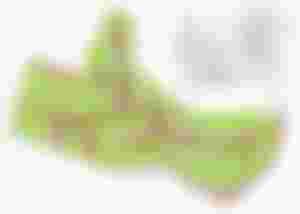
Previous paddock distribution plan
Of the paddocks:
I am going to point out a situation that is practically a constant in my country (Venezuela), which is to exploit livestock under extensive, inefficient and irrational systems. Grazing is carried out on large areas, let's say 10 hectare paddocks and an excessive number of animals grazing in that area, until the grass is exhausted, or losses due to overgrazing.
The Voisin Rational Grazing system, on the contrary, suggests the establishment of paddocks of smaller surface where a number of animals will not remain more than 2 days, being the ideal that this rotation is made in 30 paddocks of 2 hectares and with a load of 80 U.A.
This means that after 60 days the batch of cattle returns to the first paddock and in this way the rotation begins. Each paddock will have to be designed so that at least a quarter of it contains trees.
I had already applied this system in the San José farm, but unfortunately the country's economy suffered such a deep and pernicious turn that made it impossible to apply the system due to its high cost, adding to this the difficulty to obtain the materials to carry out the fencing work. Even buying diesel fuel became a corruption scheme sponsored by security agencies.
Everything came to a standstill waiting for better times, both in terms of legal security, personal safety and economic stability.
We will continue waiting, I will continue dreaming.

Original photographic and written support by oizaguirres for read.cash.


